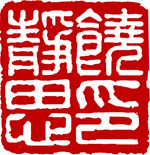Gassankan Kenpō
Classes
Tōsha Dōjō
[
Resources
Below you will find some content from the writing project Inner Dharma that is associated to the practices maintained at the Gassankan:
- Contrasting Modern and Classical Approaches, October 2025
- Modern Masters of Jiki Shinkage-ryū, September 2025
- From Kodachi to Kogusoku, June 2025
- Raito and Sente, June 2025
- Layers of Classical Practice, May 2025
- The Shin-no-shinkage heihō of Ogasawara Genshinsai, March 2025
- Hōjō ken Kokoro-e sho, December 2024
- Divergence and Unification in Shinkage-ryū, September 2024
- General Qi Jiguans's Jixiao Xinshu and Reflections on Claims of Martial Virtue, February 2023
Please consult the bibliography for recommended reference material.

